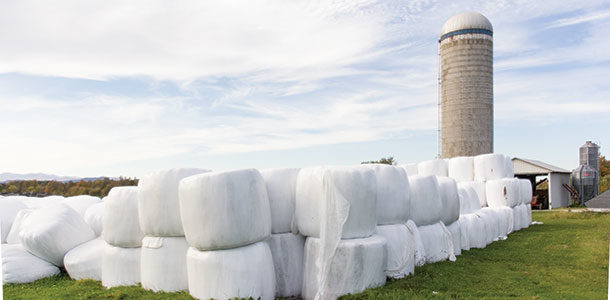This growing trend has many skeptical. Some producers say producing baleage is simply too expensive, while others do not want to have to dispose of the leftover plastic. Another point commonly brought up is: Producers think baleage is no higher in quality than what they are currently producing, or baleage is too much extra work.
All of these are valid points, though in many cases most people tend to be reluctant to try something new.
The first thing those just getting started with baleage, or thinking about trying baleage, should know is to take almost everything they learned about baling dry hay and throw it out the window. That usually gets some funny looks, but truthfully, it should be thought of as a totally different process ... that happens to use most of the same equipment.
One thing needs to be clear: Wrapping bad, rained-on or over-mature hay with plastic and calling it baleage does not automatically make it better. This is a big misconception, that all baleage is better than dry hay. The whole ensiling process is based on the decomposition of carbohydrates in the grass being able to start the fermentation process and ensile the crop.
Forage that is over-mature or rained on is likely to be lower in carbohydrates, and thus there is nothing to help the crop go through the ensiling process. Each crop differs slightly in terms of the ideal stage of harvest, but in general, it is close to the boot or dough stages.
Wrapping forage for baleage is most popular in areas where rain and humidity are most prevalent. But this does not mean there isn’t a place for it in the dry areas of the U.S. There are many alfalfa producers that take advantage of the process during first cutting because the weather does not usually cooperate in the spring.
Baleage enables a producer to take his first cutting at the ideal time even if he doesn’t have enough time to dry-down the hay. Not only will it produce a high-quality feed, but in general, the first cutting will come off earlier. That extra week could lead to an additional cutting later in the fall.
There is an abundant supply of winter annuals that make great baleage. A number of row-crop farmers around the country utilize wheat, oats or rye for a cover crop during the winter and harvest it when it’s time to begin planting beans or corn.
This enables producers who usually get one crop per year to double their land’s production without sacrificing yield on their normal crops. These winter annuals, when put up correctly, can have a relative feed quality equal to or even greater than alfalfa. This can be a huge benefit for the southern part of the U.S., which sometimes struggles to produce top-quality alfalfa.
Baleage typically gives the producer a wide window for putting up the crop. Ideally, the moisture content should be between 65 percent and 45 percent moisture.
The higher the moisture, the shorter the “shelf life” for the ensiled product. When put up correctly, beef and dairy producers may see an increase of up to 30 percent in the consumption of forage per day when compared to dry hay. This can lead to weight gain and increased milk production while often feeding the same crop as you were in the past, just put up as a higher-quality product.
In most cases, you can start out with your current hay equipment – though as you increase your number of bales, a gradual upgrade in your equipment is usually needed to account for extra wear caused by the heavy, wet crop. Considering a partnership or lining up custom-wrapping jobs for neighbors is a great way to get started.
Even with the decreases in grain prices, an increase in the effort to create and produce higher-quality forages will become even more important today and in the future. All it takes is an open mind to try a few new techniques, and you will be able to take your forage program to the next level in production. FG
PHOTO
Photo courtesy of Mike Dixon.

- Adam Verner
- Product Marketing Manager
- Krone











